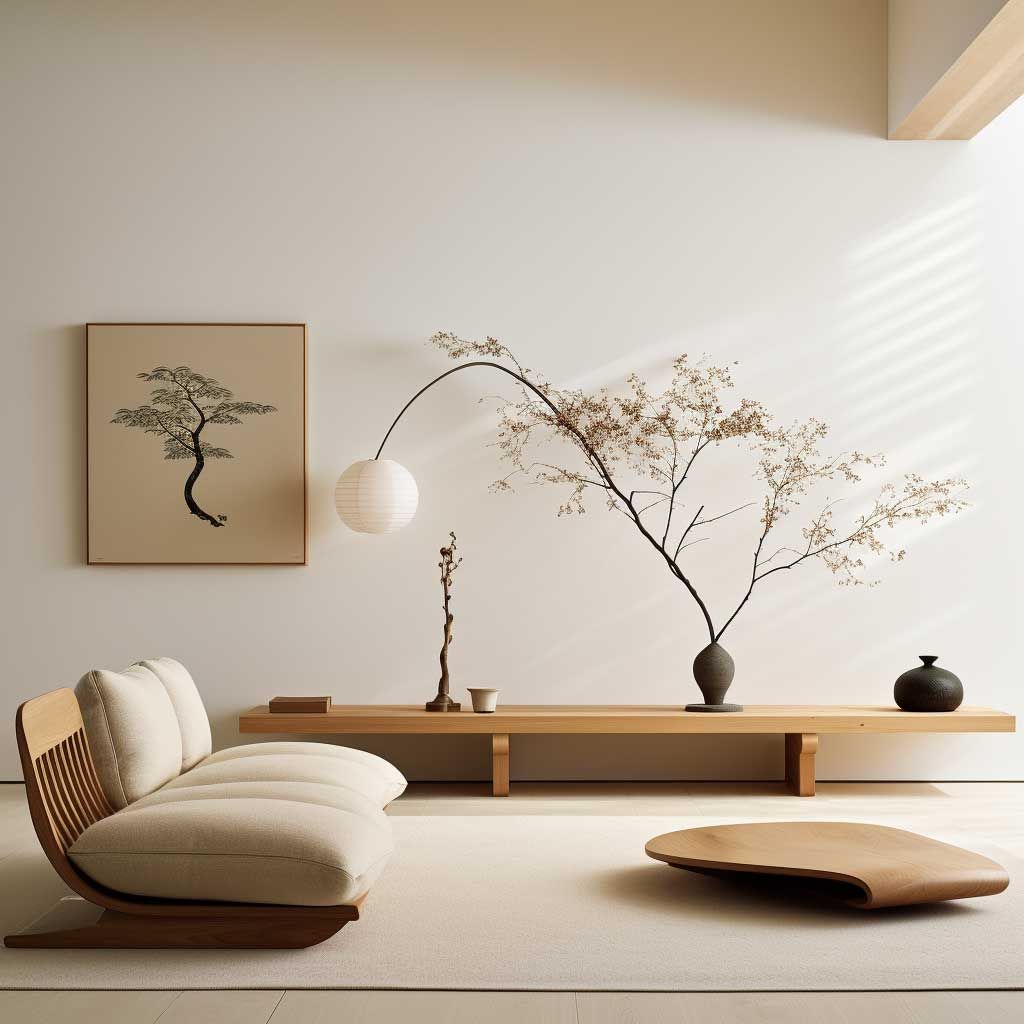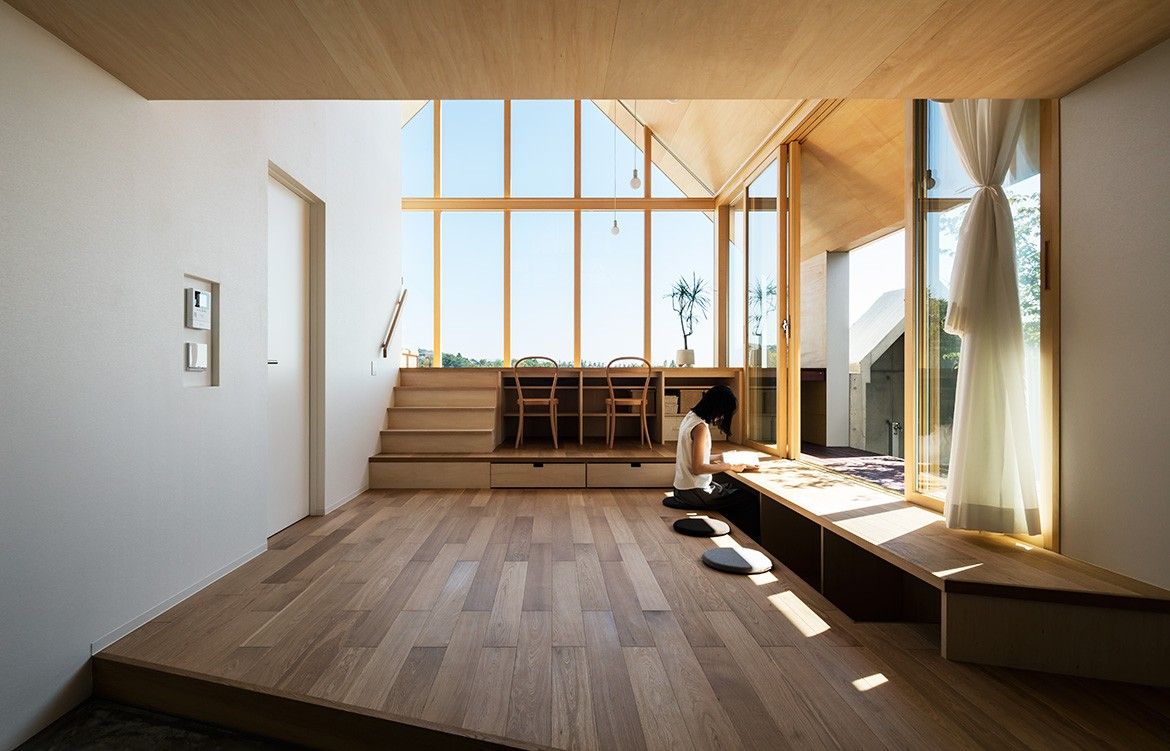Interior design ideas inspired by Japanese minimalism: Creating Serenity and Simplicity
Interior design ideas inspired by Japanese minimalism set the stage for a captivating journey into the realm of simplicity and elegance. From the use of natural materials to the concept of 'less is more,' this design style offers a unique perspective on creating harmonious living spaces.
Let's delve into the key principles and elements that define this aesthetic.
Japanese Minimalism in Interior Design
Japanese minimalism in interior design is a design style that focuses on simplicity, clean lines, and a sense of tranquility. It emphasizes the beauty of space, natural light, and the use of natural materials to create a serene and harmonious environment.The key principles of Japanese minimalism include:
1. Zen Influence
Japanese minimalism is heavily influenced by Zen philosophy, which emphasizes simplicity, mindfulness, and the beauty of imperfection. This principle is reflected in the design through clean lines, uncluttered spaces, and a focus on creating a sense of calm and balance.
2. Natural Materials
Another key principle of Japanese minimalism is the use of natural materials such as wood, bamboo, stone, and paper. These materials bring a sense of warmth and texture to the space, creating a connection to nature and promoting a feeling of tranquility.
3. Functional Design
Japanese minimalism prioritizes function over form, focusing on creating spaces that are not only beautiful but also practical and efficient. Furniture and decor are carefully chosen to serve a purpose and eliminate unnecessary clutter, contributing to the overall simplicity of the design.Examples of how Japanese minimalism influences interior design include:
- The use of sliding doors (fusuma) to create flexible and multifunctional spaces.
- The incorporation of tatami mats for a traditional and natural flooring option.
- The minimal use of furniture and decor to allow for a more open and spacious feel.
- The emphasis on natural light and views of nature to enhance the sense of tranquility within the space.
Color Palette and Materials

In Japanese minimalism, the color palette plays a crucial role in creating a sense of tranquility and simplicity in interior design. Soft, neutral colors such as white, beige, grey, and earth tones are commonly used to evoke a serene and harmonious atmosphere.
Significance of Natural Materials
Natural materials are fundamental in Japanese-inspired interiors as they bring a connection to nature and promote a sense of balance and harmony. Incorporating materials like wood, bamboo, and paper can enhance the space by adding warmth, texture, and a sense of organic beauty.
Enhancing a Space with Wood, Bamboo, and Paper
- Wood: Utilizing wood in furniture, flooring, and decor items can add a touch of warmth and elegance to a room. The natural grain and textures of wood create a soothing and inviting atmosphere.
- Bamboo: Bamboo is a versatile material that can be used for flooring, window treatments, and decorative elements. Its light and airy appearance can bring a sense of lightness and simplicity to the space.
- Paper: Japanese paper, known as Washi, is often used for sliding doors, lanterns, and screens in traditional Japanese interiors. The translucency of paper allows soft light to filter through, creating a calming and peaceful ambiance.
Furniture and Layout

Japanese minimalism in interior design is characterized by the use of simple and functional furniture pieces that serve a purpose while maintaining a clean and uncluttered look. The types of furniture commonly used in Japanese minimalism include low-lying tables, floor cushions, sliding doors, and storage solutions that can be hidden to maximize space.In Japanese minimalism, open space is essential as it creates a sense of tranquility and harmony within the living space.
The layout is carefully considered to ensure that each furniture piece serves a specific function without overwhelming the room. Simplicity in layout is key to achieving a minimalist look, with an emphasis on clean lines and a lack of unnecessary decoration.
Arranging Furniture
When arranging furniture in a Japanese minimalist style, consider the following tips:
- Avoid clutter: Keep only essential furniture pieces in the room to maintain an open and airy feel.
- Embrace negative space: Leave empty spaces between furniture pieces to create a sense of balance and calm.
- Use natural materials: Opt for furniture made from wood, bamboo, or other natural materials to bring warmth and texture to the space.
- Focus on functionality: Choose furniture pieces that serve a dual purpose, such as storage ottomans or multi-functional coffee tables.
- Low-profile furniture: Select furniture with clean lines and low profiles to enhance the minimalist aesthetic of the room.
Lighting and Ambiance
In Japanese minimalist design, lighting plays a crucial role in creating a serene and calming ambiance. The use of natural light is maximized to enhance the overall aesthetic and functionality of the space.
Maximizing Natural Light
In Japanese-inspired interiors, maximizing natural light is key to achieving a sense of openness and connection to the outdoors. Large windows, sliding doors, and skylights are commonly used to bring in as much natural light as possible.
Light-colored walls and reflective surfaces help bounce natural light around the room, creating a bright and airy atmosphere. Additionally, light filtering window treatments like shoji screens or bamboo blinds allow soft diffused light to enter the space.
Creating a Serene Ambiance
To create a serene and calming ambiance through lighting, it's important to focus on soft, diffused lighting sources. Instead of harsh overhead lights, consider using floor lamps, table lamps, and wall sconces to create warm pools of light in different areas of the room.
Warm white LED bulbs are preferred in Japanese minimalist design as they mimic the soft glow of traditional Japanese paper lanterns. Dimmer switches can also be installed to adjust the brightness level according to the desired mood and time of day.
Decor and Accessories

In Japanese minimalism, the concept of 'less is more' is key when it comes to decor and accessories. The focus is on simplicity, functionality, and purposeful design to create a harmonious space.
Incorporating Traditional Elements
When incorporating traditional Japanese elements into your minimalist design, consider adding features like shoji screens, which are sliding doors made of translucent paper and wooden frames. These screens can help divide spaces while allowing light to filter through, adding a delicate touch to the overall ambiance.Another traditional element to consider is incorporating bonsai plants.
These miniature trees symbolize harmony, balance, and simplicity—a perfect fit for a minimalist space. Placing a bonsai plant in a prominent location can bring a natural element into the room and create a sense of tranquility.
Simple and Purposeful Decorations
When choosing decorations for a Japanese minimalist interior, opt for simple and purposeful items. Avoid cluttering the space with unnecessary decor and instead focus on pieces that serve a practical function or have a significant meaning. For example, a carefully selected piece of artwork or a handmade ceramic vase can add a touch of elegance without overwhelming the space.Incorporating decor and accessories in a Japanese minimalist interior is all about finding a balance between functionality and aesthetics.
By choosing items that are simple, purposeful, and meaningful, you can create a serene and harmonious living environment that reflects the principles of Japanese minimalism.
Fusion with Modern Design
Japanese minimalism can seamlessly blend with modern design elements, creating a unique and harmonious aesthetic that marries tradition with contemporary style. By incorporating the concept of 'wabi-sabi,' which celebrates imperfection and transience, modern interiors can gain a sense of warmth and authenticity that is deeply rooted in Japanese culture.
Here are some tips on how to effectively merge traditional Japanese aesthetics with modern design principles:
Blending Traditional Japanese Aesthetics with Contemporary Styles
To achieve a successful fusion of Japanese minimalism and modern design, consider the following strategies:
- Keep it Simple: Embrace clean lines, uncluttered spaces, and a neutral color palette to maintain the simplicity and tranquility of Japanese minimalism.
- Natural Materials: Incorporate natural materials like wood, stone, and bamboo to add warmth and texture to the modern space, reflecting the organic elements often found in traditional Japanese interiors.
- Functional Furniture: Opt for sleek and minimalist furniture pieces that serve a purpose while complementing the overall design scheme. Look for pieces with clean silhouettes and a timeless appeal.
- Subtle Accents: Introduce subtle Japanese-inspired accents such as shoji screens, tatami mats, or bonsai plants to infuse the space with a touch of authenticity and cultural richness.
- Harmonious Balance: Strive for a harmonious balance between modern elements and traditional Japanese aesthetics, ensuring that each piece contributes to the overall cohesion of the design.
Conclusive Thoughts
In essence, embracing Japanese minimalism in interior design is more than just a stylistic choice—it's a philosophy that celebrates the beauty of simplicity and the tranquility it brings to our homes. By incorporating these design ideas, you can transform your living space into a serene sanctuary that exudes timeless elegance and peacefulness.
Essential Questionnaire
What are the key principles of Japanese minimalism?
The key principles include simplicity, natural elements, open spaces, and the concept of 'ma' (negative space).
How can I incorporate traditional Japanese elements into my modern interior design?
You can blend traditional Japanese aesthetics with modern styles by integrating elements like shoji screens, tatami mats, or bonsai plants in a minimalist way.
Why is natural light important in Japanese minimalist design?
Natural light enhances the sense of serenity and connection to nature, which are central themes in Japanese minimalism.




